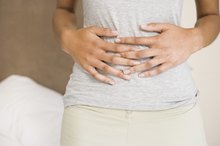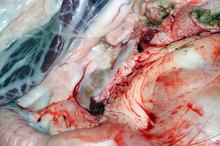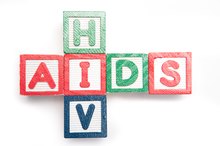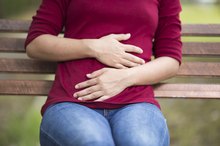What Are the Causes of Rectal Mucus?
Mucus is a slimy, slippery fluid that acts as a lubricant and protects various structures in the body. There are a number of mucus-secreting cells in the body, but mucus is most prominent in the respiratory, genital and gastrointestinal tracts, notes the University of Colorado at Boulder 1. When the gastrointestinal tract becomes infected or undergoes frequent irritation, the mucus-secreting cells may begin to produce excess mucus, which is passed through the rectum.
If you are experiencing serious medical symptoms, seek emergency treatment immediately.
Ulcerative Colitis
Ulcerative colitis is a type of inflammatory bowel disease that is characterized by the development of ulcers, or open sores, in the lining of the colon and rectum. Ulcers develop when chronic inflammation causes weak spots in the intestinal tract. The chronic inflammation also causes the intestinal tract to produce excess mucus, which is excreted through the rectum. Other symptoms of ulcerative colitis include:
- fatigue
- anemia
- weight loss
- loss of appetite
- rectal bleeding
- joint pain
- sores on the skin surface
The exact cause of ulcerative colitis is unknown, but the National Digestive Diseases Information Clearinghouse notes that it is believed to be a result of an abnormal immune system reaction to bacteria in the gastrointestinal tract 2. Treatment for ulcerative colitis differs between individuals, but general treatment options include a combination of medications or, in severe cases, surgery.
- Ulcerative colitis is a type of inflammatory bowel disease that is characterized by the development of ulcers, or open sores, in the lining of the colon and rectum.
Shigellosis
Parasites That Cause Excessive Mucus
Learn More
Shigellosis is a bacterial infection of the intestinal lining that is caused by a group of bacteria called Shigella 3. Shigella are spread when the bacteria is released in the stool and enters the mouth through the ingestion of contaminated food or water. MedlinePlus notes that symptoms of shigellosis may develop in one to seven days, but generally show up three days after infection 3. Shigellosis usually goes away on its own within seven days 3. Antibiotics may be given to decrease the severity of symptoms and reduce the contagiousness of the infection. It is important to drink plenty of water while symptoms persist in order to prevent dehydration.
Proctitis
Proctitis is an inflammation of the lining of the rectum, which is the muscular tube at the end of the colon that allows stool to exit the body. Proctitis may be caused by sexually transmitted diseases, food-borne illnesses, inflammatory bowel diseases and radiation therapy, according to MayoClinic.com 4. Treatment for proctitis depends on the cause of the inflammation. Proctitis that is caused by bacteria or infection is usually treated with antibiotics or antivirals. If proctitis is caused by inflammatory bowel diseases, medications to control inflammation or surgery may be needed.
- Proctitis is an inflammation of the lining of the rectum, which is the muscular tube at the end of the colon that allows stool to exit the body.
- If proctitis is caused by inflammatory bowel diseases, medications to control inflammation or surgery may be needed.
Related Articles
References
Writer Bio
Lindsay Boyers has a Bachelor of Science in nutrition from Framingham State College and a certificate in holistic nutrition from the American College of Healthcare Sciences. She is also a licensed aesthetician with advanced training in skincare and makeup. She plans to continue on with her education, complete a master's degree program in nutrition and, ultimately, become a registered dietitian.









